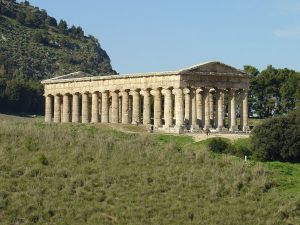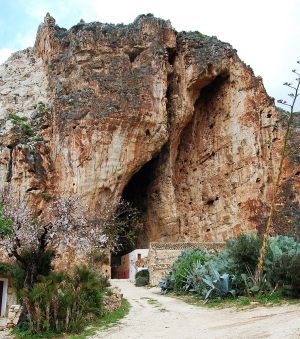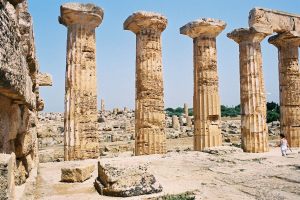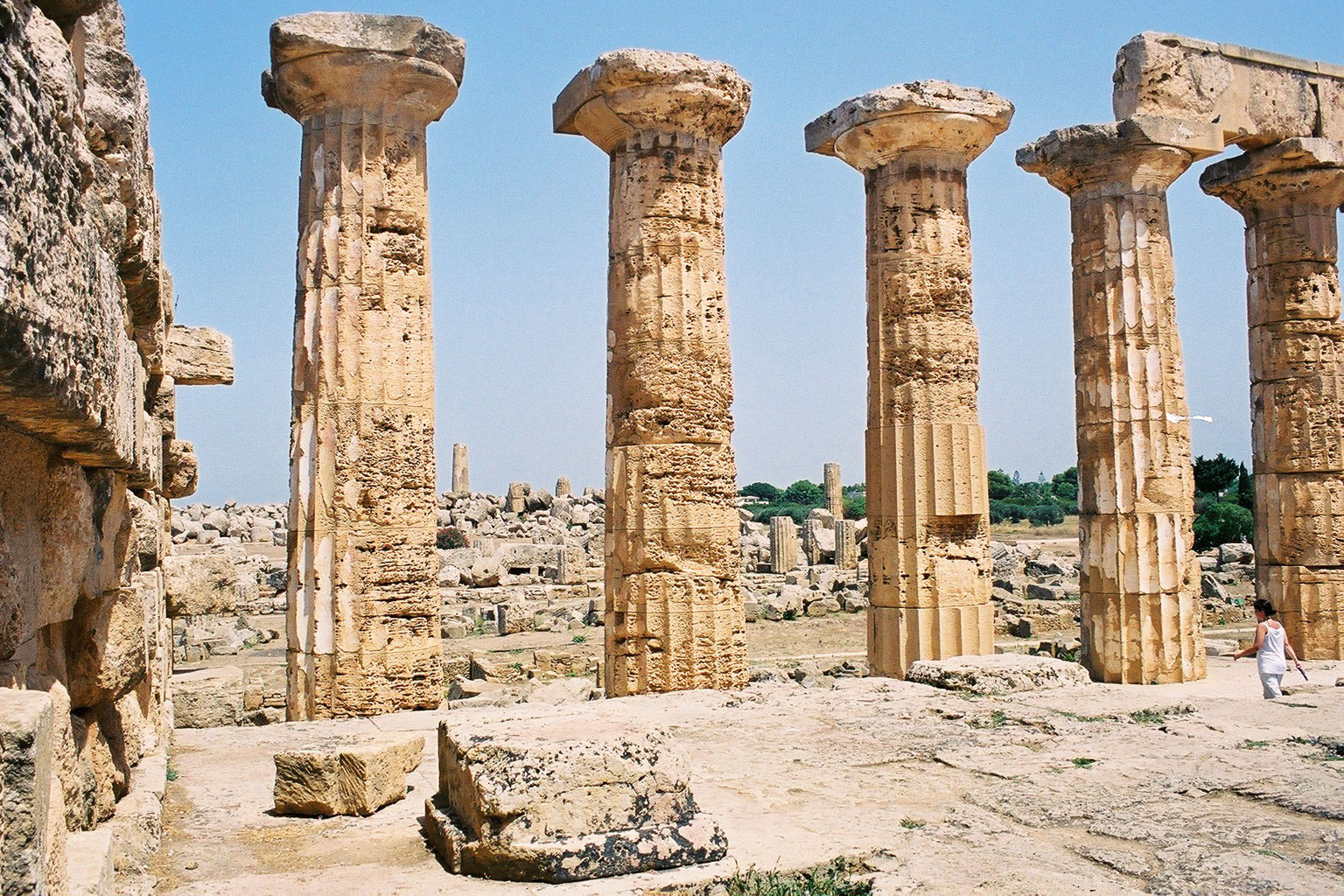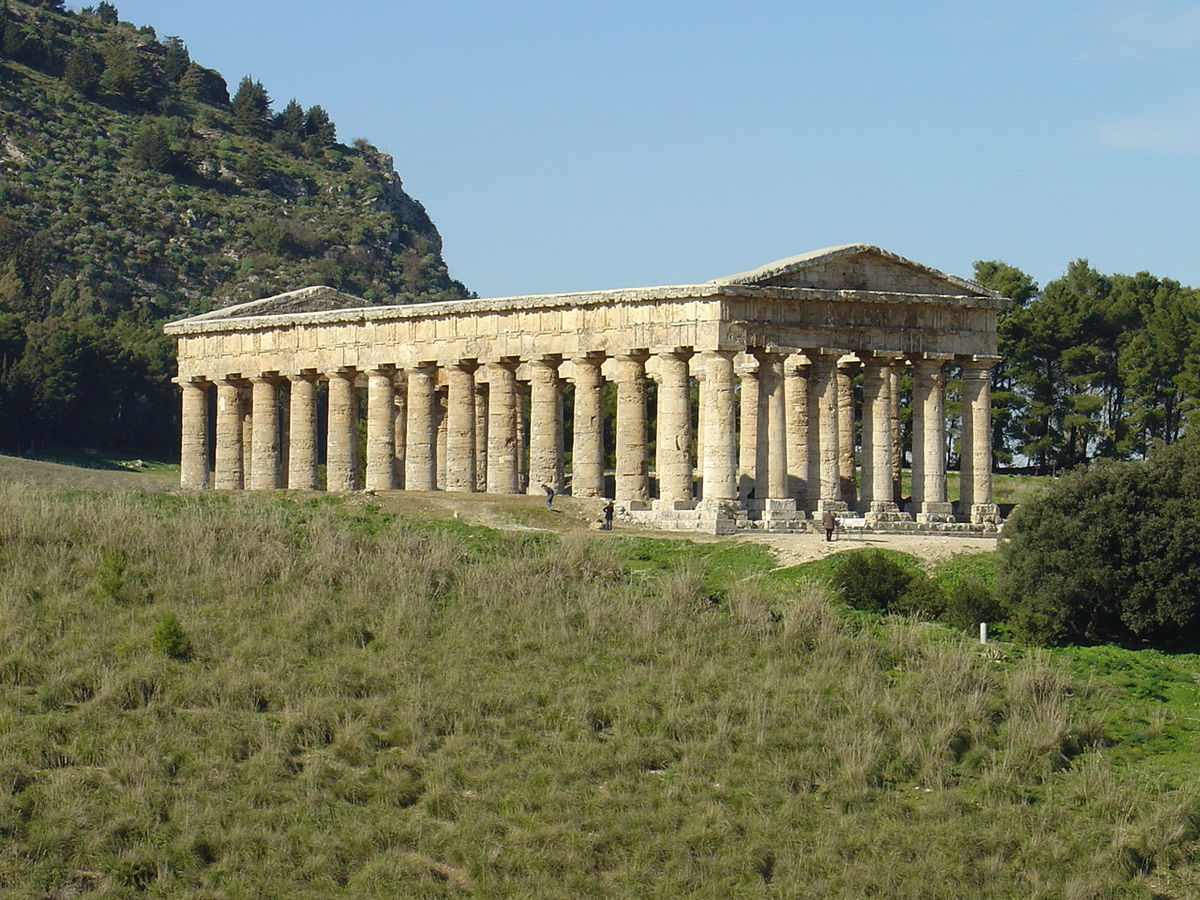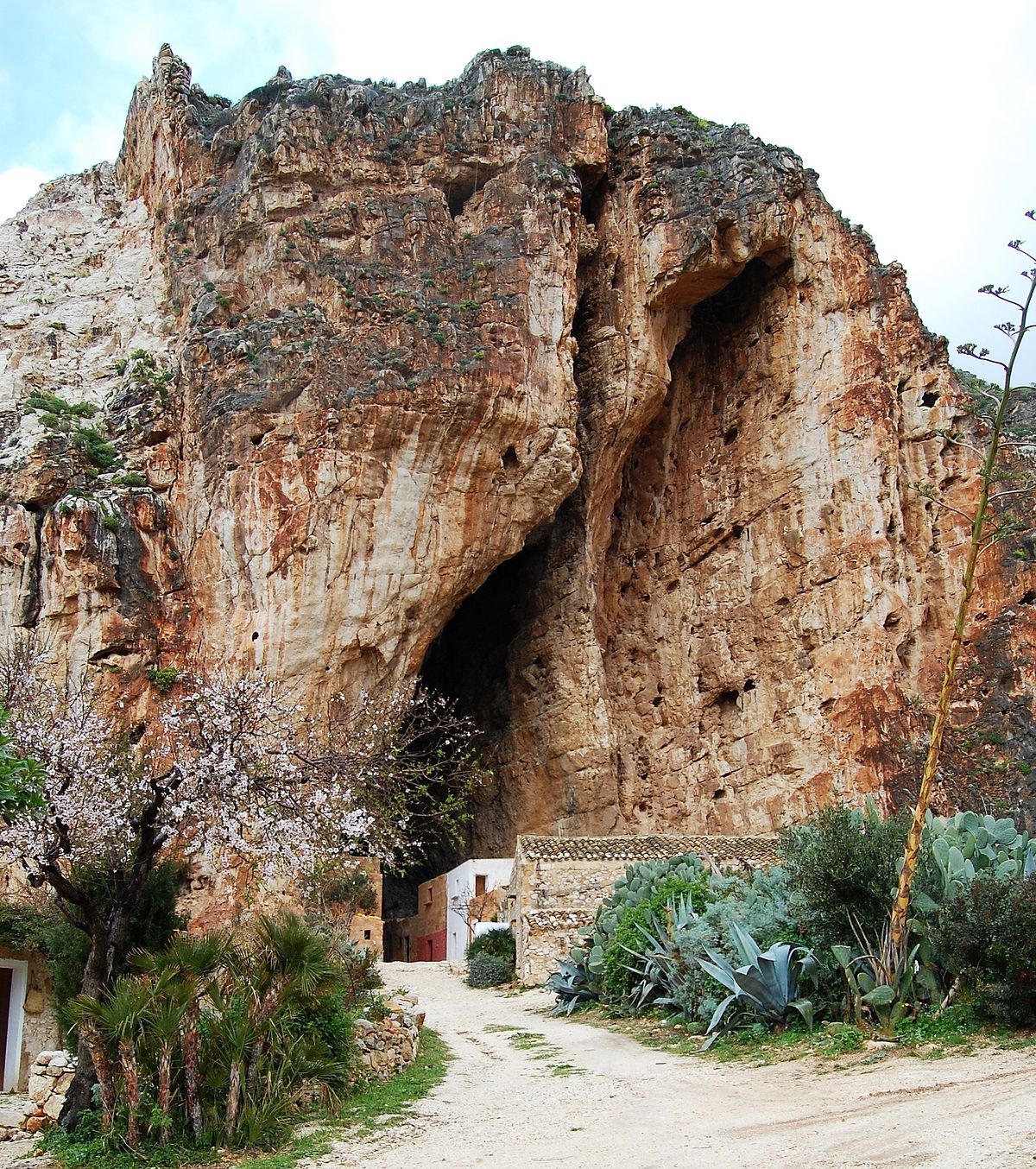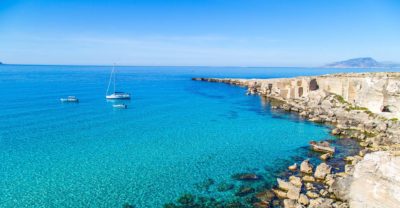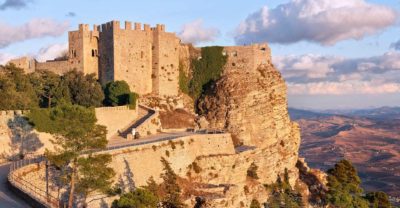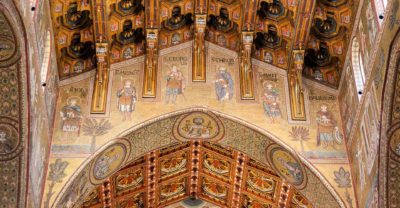Archeological sites
Trapani
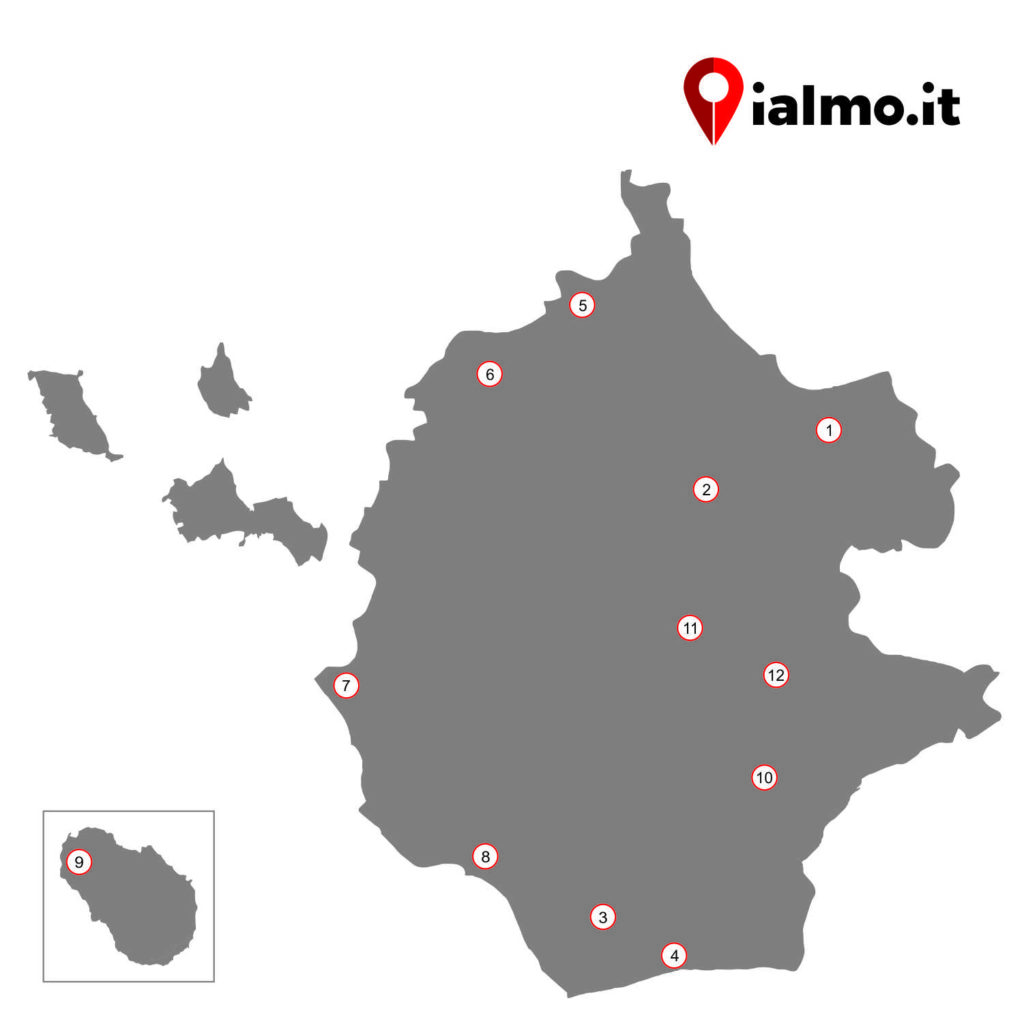
Archaeological Sites of Alcamo, Alcamo:
Ruins on Mount Bonifato: the Funtanazza, the Castle of Ventimiglia, Porta Regina, the remains of the ancient village of Bonifato;
Ruins in the Calatubo area: the Castle of Calatubo, the necropolis and the ruins of the village;
Remains of ancient Roman kilns at Alcamo Marina;
Geologica Capuchin Quarry Travertine dating back to the Pleistocene;
Archaeological site in the Mulinello district with findings dating back to the Mesolithic period;
Area adjacent to the Fiume Freddo with Neolithic finds.
Segesta archaeological site, Calatafimi Segesta: due to its great historical and cultural interest, the area has become an archaeological park in 2013 and includes several sites: the Doric temple; theater; the sanctuary of the Mango district; the navarca’s house (Roman period); the medieval area (city walls, castle annexed to the theater, two Norman churches, the medieval quarter and the mosque). It is right here to remember that Calatafimi Segesta remains the closest inhabited center today, both from a geographical point of view and from an ethno-anthropological point of view, to the ancient civilization of the Elimi that populated Segesta. The ancient city of the Elymians, which later became the historical Greek rival of Selinunte, was devastated by the vandals and disappeared in the Middle Ages. To visit also the ossuary of Pianto Romano that, erected on the summit of the hill, collects the bodies of the fallen in the battle fought by the Garibaldians.
Cave di Cusa, Campobello di Mazara: also known as “Rocche di Cusa”, these are the famous stone quarries from which the material for the Selinuntine constructions was extracted. The quarries were in use from the 6th century BC until the defeat of the Greeks by the Carthaginians in 409 B.C. The quarries were abandoned in a hurry by the workers and cause of the sudden arrival of the Carthaginian army. The sudden flight of workers has meant that today we can not only recognize but also follow all the various stages of processing: from the first deep circular incisions up to the finished boulders that were waiting only to be taken away. The Quarries are today named after the archaeologist Vincenzo Tusa.
Archaeological Park of Selinunte, Castelvetrano: today the whole of the ruins of the ancient city of Selinunte is one of the most important Archaeological Parks of Sicily and covers a vast area of almost 300 hectares. Selinunte, which owes its name to the river Selinon (today Modione), was founded in 628 BC from the settlers of Megara-Hyblaea and was the Greek colony most west of Sicily. In 409 BC he was the victim of one of the bloodiest slaughters of the ancient world, by Segesta and Carthage. For centuries, the town was lost traces until 1823, when two English archaeologists began excavations.
Caves of Scurati, Custonaci: they are an ancient prehistoric settlement that testifies to the presence of man in the area since ancient times. Of great interest are the graffiti in the Mangiapane Cave that was inhabited by man since the Upper Paleolithic. The fossils, the graffiti and the lithic material from the Buffa cave and the linear incisions in the Miceli cave date back to the same period. Remains of a necropolis of the Copper Age can be found in the Tono district. Still the Rumena cave has been recognized as a geo-site of worldwide interest.
Necropolis Piano delle Forche, Erice: just beyond Porta Trapani, archaeological excavations of the Seventies brought to light a Necropolis with cinerary amphorae of Punic and Greek-Hellenistic type dating back to a period between the end of the fourth century BC and the first half of the 3rd century BC Finally, we report in the territory of the municipality the cyclopean walls of the Elymian-Phoenician-Punic period dating back to the VIII / VII century BC.
Archaeological sites of Marsala, Marsala: In the area of Capo Boeo there are important archaeological testimonies such as a thermal environment and the Roman Insula of the late Roman-imperial age (IV century AD) and that includes remains of private houses with floors rich in decorations mosaic depicting scenes of struggle between wild animals and mythological figures. In 2005, during the restoration work, a marble statue was found depicting Venus Callipige (2nd century AD) in the churchyard of the Church of San Giovanni al Boeo. In July 2008, a building dedicated to the cult of Isis was discovered. Finally, we report that between 2007 and 2014 works were carried out to enhance the Archaeological Park of Porta Nuova and the structures of the Lilibeo Archaeological Museum at the Baglio Anselmi.
Sites of Mazara del Vallo, Mazzara del Vallo: worthy of note are the eneolithic settlement of Roccazzo, near the hamlet of Borgata Costiera and the remains of two Roman villas that are located in the space in front of the Church of San Nicolò Regale and in Contrada Mirabile . Recall also that the captain Francesco Adragna in 1998 was the protagonist of a sensational archaeological discovery: at 480 meters deep in the waters of the Strait of Sicily he recovered the so-called statue of the Dancing Satyr, a sculpture of more than two meters dating back to the Hellenistic period. The statue was exhibited in Rome in the halls of Montecitorio but also abroad, precisely in Aichi, Japan.
Area of Mursìa and Cimillia, Pantelleria: the archaeological heritage of the island is immense, among which the area of Mursìa and Cimillia stands out, ie the Bronze Age settlement with a monumental fortification wall, the largest prehistoric wall of the Mediterranean discovered so far, and the relative Necropolis of the Sesi. There are also numerous testimonies of the ancient Cossyra, visible on the hills of San Marco and Santa Teresa. Still in 2003, three heads of Roman statues dating back to the first century AD were found.
Contrada Stretto, Partanna: on the site was found an imposing system of artificial ditches, a hypogeal gallery of the Neolithic age and a necropolis of artificial cave tombs from the Bronze Age. Some finds are now kept at the Regional Archaeological Museum of Palermo and in the local prehistoric museum inside the Grifeo Castle.
Sites of Salemi, Salemi: About one kilometer from the city, on the high ground of Mokarta, there are the remains of a large settlement of the late Bronze Age. Unique throughout the Region, the settlement consists of huts (rectangular and / or square) with forceps entrance. Two kilometers from Salemi, on Monte Polizzo, there are remains of houses, clay materials and various metal objects dating from the eighth to the fourth century BC. Downstream of the city, in the San Miceli district, there is the homonymous Early Christian Basilica of the III / IV century AD. which exhibits some mosaic floors.
Monte Finestrelle Archaeological Area, Santa Ninfa: near the area of the Grotta di Santa Ninfa Reserve lies the Monte Finestrelle archaeological area, so named for the resemblance of small-window rock tombs. The tombs, about forty, of the late Bronze Age and of the first centuries of the first millennium BC, are carved into the rock and placed one next to the other in horizontal rows on several levels. Other excavations carried out in the western part of the Mount have highlighted the remains of a small prehistoric settlement.
